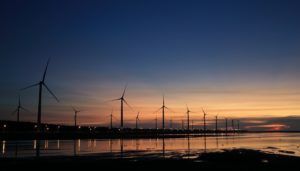
Wind turbine giant Vestas has added a new technological breakthrough to its manufacturing facilities that could revolutionize wind, automotive, and aeronautics manufacturing in the decades to come.
Wind Energy A Clean Power Source
Wind energy is one of the cleanest power sources available. Yet even this green industry is challenged by its front-loaded carbon footprint as well as its end-of-life waste issues.
How significant are these problems?
Each wind turbine requires hundreds of tons of steel, concrete, copper, and fiberglass, as well as rare-earth materials used in turbine and generator magnets. Mining and manufacturing these materials takes energy and emits carbon into the atmosphere, emitting greenhouse gases into the atmosphere. But how does this negative effect compare to other energy sources?
Turns out, wind does quite well. According to a study by the National Renewable Energy Laboratory(NREL,) wind turbines average 10 grams CO2 emissions per Kw hour of generated electricity. Meanwhile, other clean energy sources like photovoltaics averaged 40g/kwh. Traditional energy sources like coal were off the chart at 1000g/kwh.
Wind Power Has a Waste Issue
But waste problems have remained. Industrial wind turbines are monstrous structures with complicated designs. While older, smaller turbines used keyed shafts to marry parts together and had fifteen to twenty-year lifespans, utility-grade turbines need to survive hostile and challenging environments for up to three decades. Blades, which often take the brunt of wear from speed and vibration, must also preserve safety and operational efficiency through robust structural integrity. This has meant using composite fiberglass, resin, and carbon layers to ensure minimal wear and tear.
But in the past, such composites made recycling impractical if not impossible. Strong, lightweight composites are hard to separate at the end-of-life stage. This limits opportunities for recycling.
Before, decommissioned turbine blades were sent to landfills. Each blade, which can be longer than a Boeing 747 wing, weighs over 5 tons. In fact, a 2017 Cambridge study determined turbine blade waste would reach a whopping 43 million tons by 2050.
Looking Ahead to Net Zero
But a new technology recently introduced by Vestas Wind Technology may change that trajectory. The wind giant wants to reach a 2040 zero-waste goal through recycling blade materials making up the majority of the company’s waste.
This new process breaks down thermoset composites in existing blades into fiber and epoxy resin. After running materials through a ‘chemcycling’ process that brings them back to a state similar to virgin materials, separated products can be reused to manufacture new turbine blades. No longer destined for the landfill, old blades enter a reuse/reduce/recycle circular supply chain. The Vestas technology has already been adopted by Spanish turbine manufacturer Siemens Gamesa, the second-largest wind turbine manufacturer in the world behind Vestas. If adopted by the rest of the industry, it could significantly reduce the waste stream from the wind energy sector, further reducing their already limited impact on the environment. Vestas believes in time their technology could also revolutionize airplane and car supply chains.


